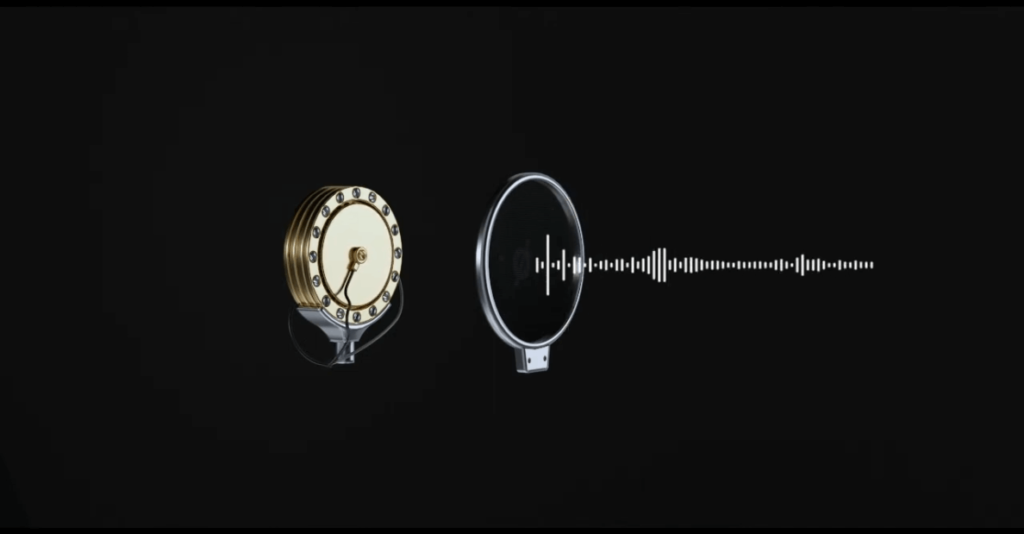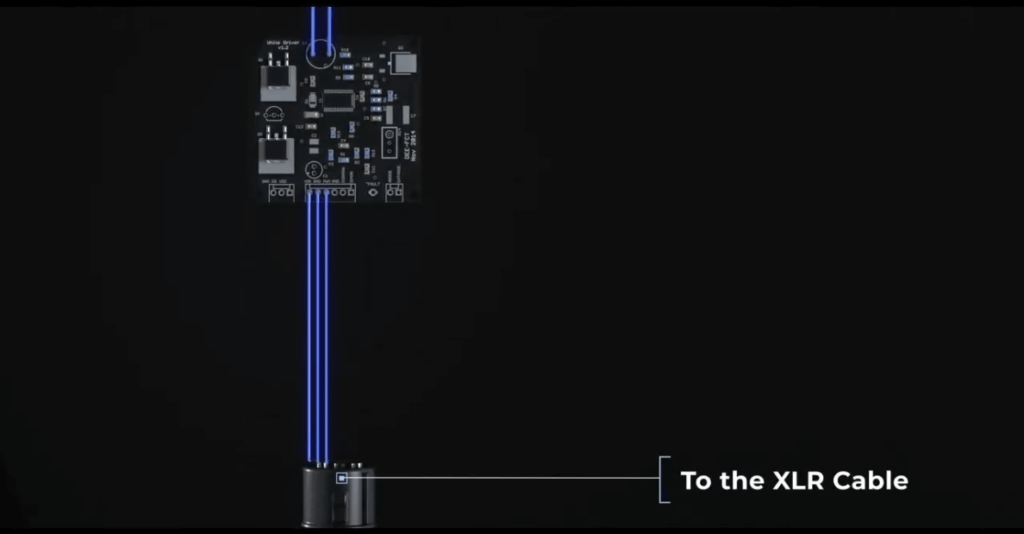Microphones are the most essential consoles in our daily lives, and they’re used in almost every aspect of our lives, from recording songs, podcasting, gaming, making phone calls, and more.
Different types of microphones are available in the market for this higher popularity of microphones, each with unique features and purposes. One popular type is a condenser microphone.
A condenser microphone is an electroacoustic transducer that converts sound into an electrical signal. It works on the principle of capacitance, where changes in pressure from sound waves cause a thin diaphragm to vibrate, creating an electrical signal.
If the Condenser microphone is your new name, don’t worry! In today’s article, I’ll discuss all of What is a Condenser Microphone, how it works, what’s inside a condenser microphone, and many more.
Quick Access
ToggleWhat is a condenser microphone?

A condenser microphone is a type of microphone that uses a capacitor to convert sound waves into electrical signals. It’s also known as a capacitor or electrostatic microphone due to its working principle.
A condenser microphone consists of two plates – one stationary and one movable (diaphragm), separated by an air gap. When sound waves hit the diaphragm, they vibrate, changing the distance between the plates and electrical capacitance.
These changes in capacitance are then amplified and converted into an electrical signal, which is then transmitted to an audio recording device or sound system.
How does a condenser microphone work? (Video Turorial)
How does a condenser microphone work?
Before knowing how a condenser microphone works, let’s look at what’s inside a condenser microphone.
What is inside a Condenser Microphone?

The only visible condenser microphone elements are the Metal Case and XLR Cable.
Metal Case: This is the protective outer shell that houses all the internal components of a condenser microphone. It also helps to reduce unwanted noise and interference.
XLR Cable: The XLR cable connects the microphone to an audio recording device or sound system. It carries the electrical signal from the microphone to the recording device.
Now, let’s dive into what’s inside this metal case.

Microphone Capsule: This is the most crucial component of a condenser microphone. It comprises two plates – one fixed (backplate) and one movable (diaphragm). The diaphragm is attached to a small metal piece called a backplate, which acts as the other plate of the capacitor.

Microphone Circuit: The microphone circuit comprises a preamplifier and an output circuit. The preamplifier amplifies the electrical signal from the microphone capsule, while the output circuit ensures that the signal is compatible with recording devices or sound systems.
How Microphone Capsule Works

Microphone capsule built with a lot of material:

Conductive Membrane: The conductive membrane is the diaphragm part that vibrates when sound waves hit it. It’s usually made of a thin metal layer, such as gold or aluminium.

Backplate: The backplate acts as the other capacitor plate and the diaphragm. It provides a stable surface for the diaphragm to vibrate against.

Clamping Ring: The clamping ring holds the diaphragm and backplate together, maintaining a consistent distance.

Diaphragm Wires: The diaphragm wires are attached to the conductive membrane and connected to the preamplifier, allowing the electrical signal to be transmitted.
Now, let’s understand how these components combine to convert sound into an electrical signal.

When sound waves hit the condenser microphone, they cause the diaphragm to vibrate. These vibrations change the distance between the plates, which changes the electrical capacitance.

The changes in capacitance create an electrical signal, which is then amplified by the preamplifier and sent to the output circuit. The output circuit converts this signal into a format that speakers can record or play.
What is a condenser microphone used for?
Condenser Microphone is going to be more popular day by day. It’s widely used in various fields like recording studios, live performances, podcasting, and broadcasting.
Due to its high sensitivity and wide frequency response range, condenser microphones are commonly used for capturing detailed sound recordings and vocals in professional audio applications.
They are also popular among content creators because they can pick up clear and crisp audio while reducing background noise. This makes them ideal for podcasting, voiceovers, and YouTube videos.
In addition to these purposes, condenser microphones are used in scientific and medical equipment, telecommunication devices, and even in musical instruments like pianos.
What is a cardioid condenser microphone?
A cardioid condenser microphone is a subtype of the condenser microphone that has a heart-shaped pickup pattern. This means it primarily picks up sound in front of the microphone while rejecting sound from behind or to the sides.
This directional pattern makes cardioid condenser microphones ideal for recording vocals and solo instruments, as they can capture clear audio while minimising background noise and interference.
They are commonly used in studio recording and live performances, as well as for broadcasting and podcasting. Other types of directional condenser microphones include supercardioid, hypercardioid, and omnidirectional.
Advantages and Disadvantages of a Condenser Microphone
Every electrical element must have Pros and Cons. Condenser Microphone is also no exception to that. Let’s examine the main advantages and disadvantages of using a condenser microphone.
Advantages:
- Excellent sound quality with high sensitivity and wide frequency response
- Capable of capturing detailed audio recordings and vocals
- Ideal for use in a variety of professional audio applications
- It can pick up clear audio while reducing background noise
- Smaller and more lightweight compared to other microphone types
Disadvantages:
- More expensive than dynamic microphones
- Requires phantom power or an external power source to operate
- Sensitive to loud sounds and can distort if not handled properly
Condenser mics, requiring phantom power and offering high sensitivity, differ from normal ones in capturing detailed audio. However, they can distort if exposed to noisy sounds.
Condenser microphones, utilising capacitors, capture high-quality, detailed audio across various professional applications but require external power and careful handling. They excel in studio recording, broadcasting, and podcasting due to their sensitivity and noise reduction capabilities.
Dynamic and condenser microphones serve different purposes. While dynamic microphones are durable and ideal for live performances, condenser mics excel in studio-based, detailed sound capture.
Condenser microphones deliver superior audio quality due to their high sensitivity and comprehensive frequency response. They excel in studio settings, capturing detailed vocals while minimising noise.
Condenser microphones, known for their sensitivity and comprehensive frequency response, are excellent for recording singing. They capture clear, detailed vocals, making them ideal for studio recordings.
The term “condenser” microphone stems from using a capacitor, or “condenser”, to convert acoustic energy into electrical energy. This sophisticated design enhances sound capture and quality.
Condenser microphones, with their high sensitivity and detailed sound capture, are great for karaoke. They enhance performance by delivering clear and rich vocals.
Conclusion
This is all for today; I hope if you read all of this content, you will know all about what a Condenser Microphone is. We covered its components, working mechanisms, and usage in various fields.
We also discussed the advantages and disadvantages of using a condenser microphone and its different types and directional patterns. Ultimately, it is clear that condenser microphones are a valuable tool for capturing high-quality audio in various professional applications.
Whether you are a musician, content creator, or scientist, a condenser microphone is an essential piece of equipment that can significantly enhance your work.
So, invest in a good quality condenser microphone and enjoy its benefits for years. So, experiment with different settings and techniques to get the best out of your condenser mic!



